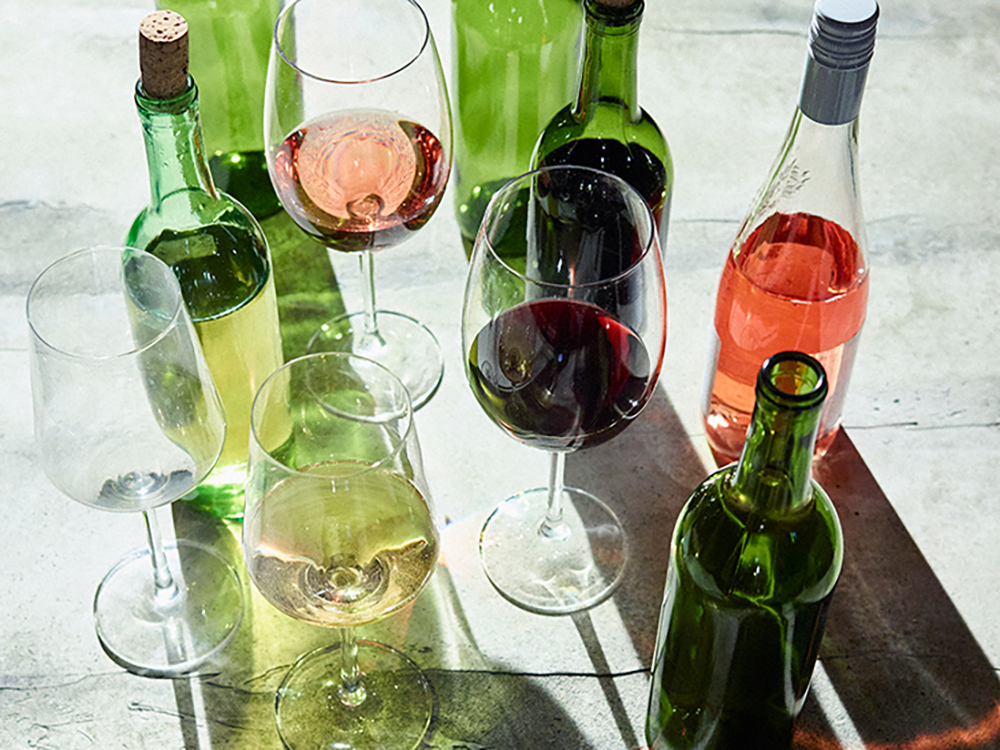By Michael Bray
Over the last several weeks, I’ve used this column to discuss the key structural components of wine. So far, we’ve explored acidity, tannin, residual sugar, and fruitiness. Today, we’ll finish our journey with a discussion of the final structural component of wine: alcohol. While all wines contain alcohol, the level of alcohol will vary depending on grape varietal, growing region, and the choices of the winemaker.
As a recap, wine is made when natural grape sugars are fermented into alcohol. As such, there is a vital relationship between sugar and alcohol. Some grapes (including Zinfandel and Grenache) are naturally higher in sugar, and they thus have a potential to create dry wines with a high alcohol content. That said, if the winemaker chooses to halt the fermentation process before all the sugars have been converted to alcohol, these grapes can also produce sweeter wines with a low ABV (alcohol by volume). This is why a grape like Zinfandel is so versatile: it can be used to make robust, dry red wines, as well as light, sweet blush wines.
Since warmer temperatures encourage grapes to ripen more quickly and more completely, warmer growing regions tend to produce wines with higher alcohol levels. Wines produced in warm climate zones like California, Argentina, and southern France can potentially have an ABV of 14% or higher, while comparably dry wines produced in cooler regions like Germany, northern Italy, or Burgundy, France will likely hover around 12% or 12.5% ABV.
Wines with a higher alcohol content will typically feel heavier and possibly warmer on the palate. These wines could be described as “full-bodied,” “mouth-filling,” and “bold.” For a wine to feel balanced, the alcohol content must be supported by other structural elements. For example, acidity can lighten the weight of a high-ABV wine, and a firm tannin structure will provide a foundation of texture and flavor. On the other hand, if a wine has an elevated alcohol content, low acidity, and low tannin, it will likely taste overly boozy, and it will be difficult to discern much aside from the alcohol.
Balance is achieved when all structural components of a wine are working in harmony, and no component is overpowering any other. This doesn’t mean that a particular element won’t stand out, especially as you are training your palate to identify the structural components. For example, you are likely to notice the acidity of a New Zealand Sauvignon Blanc more prominently than its residual sugar or alcohol. The more you taste, the more you will be able to acknowledge not only the star component in each wine, but also the supporting cast that allows the main element to shine.
I hope this journey through the structural components of wine has offered some helpful guidance. I encourage you to explore new growing regions and varietals, and taste mindfully to identify as many structural components as possible in each wine. The more you taste, the more you will train your palate, and the easier it will be to identify wines you truly enjoy, and to communicate your preferences to others. You will be selecting new favorites from wine store shelves and restaurant wine lists in no time!
I’d love to hear about your wine adventures and discoveries. You can reach me any time at michael@passionvines.com
Drink passionately,
Michael
Michael Bray is the founder of and director of operations at Passion Vines Wine & Spirit Company in Somers Point and Egg Harbor Township. He serves on numerous local boards.






